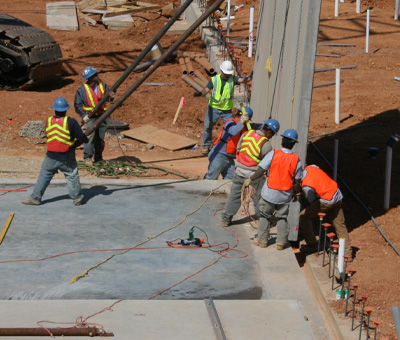In today’s fast-paced work environments, employee safety hinges on one critical process: risk assessment. This systematic approach helps organizations identify hazards and understand how to mitigate the risks they pose. Complying with OSHA regulations is only part of the process. Keeping people safe, improving operations and protecting the future of your business all come into play when evaluating risk.
What is Risk Assessment?
Risk assessment is essential in occupational safety and health (OSH) management. It begins with identifying potential hazards in the workplace, analyzing and evaluating the risks those hazards pose to workers. A well-executed risk assessment allows organizations to predict where injuries might occur and take steps to prevent them.
The Importance of Risk Management
While compliance with safety standards like OSHA is crucial, risk management takes safety to the next level. It enables organizations to proactively manage risks before they result in accidents or incidents. Implementing a comprehensive risk management strategy not only protects your team but also enhances operational efficiency. When done correctly, risk management drives continuous improvement and innovation in safety protocols, ensuring that the work environment adapts to evolving risks.
Key Focus Areas for Risk Assessment
A comprehensive approach to risk assessment will produce better and safer results. Key focus areas include:
- Data Gathering: Conduct a detailed review of you work processes, accident records, and workplace conditions to understand the unique risks in your environment.
- Risk Evaluation: Once hazards are identified, use tools such as risk matrices, heat maps, and Failure Mode and Effect Analysis (FMEA) to determine the severity and likelihood of risks. This ensures that the most dangerous hazards are prioritized first.
- Risk Treatment: After evaluating risks, collaborate with your team to implement the most effective control measures. This includes using the hierarchy of controls—from eliminating hazards to administrative controls and personal protective equipment (PPE).
Core Competencies
Understanding risk is critical for safety professionals. Core competencies are outlined in key standards like ANSI/ASSP Z10, ISO 45001, and ISO 31000. At Exceed Safety, we align our processes with these recognized standards to ensure your organization not only complies with regulations but also implements industry-leading practices.
Going Beyond Compliance
While regulatory compliance is important, it’s just the starting point. By adopting proactive risk management strategies, your organization ensures that it isn’t just reacting to incidents but actively preventing them. This approach improves the company’s bottom line, increases operational efficiency, and demonstrates a strong commitment to employee well-being.
Exceed Safety’s Approach to Risk Assessment
At Exceed Safety, we go beyond identifying risks—we help you manage them effectively. Our comprehensive risk assessments are designed to uncover hidden hazards, assess the likelihood and impact of risks, and develop tailored solutions to mitigate those risks. We gather data, use state-of-the-art technology for evaluating risk, and then collaborate with your team to implement the most effective control methods for you and your business. Give us a call to discover how our methods could help you create a safety and more efficient workplace.
Risk assessment serves as a fundamental tool for organizations across all sectors to assess and prioritize potential risks effectively. By implementing a comprehensive risk assessment approach, you can prepare for predictable and unexpected events, minimize potential damage, and ensure the safety and well-being of your employees. A well-executed risk assessment not only protects your organization against potential threats, but also supports strategic decision-making and contributes to the long-term success of the organization.
SEPTEMBER 2024








